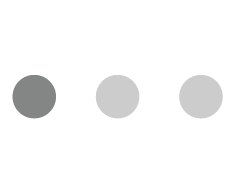You’re watching an episode of Grey’s Anatomy, and Dr. Meredith Grey isn’t just relying on her surgical skills and medical knowledge but also consulting an AI system that provides real-time diagnostics and treatment recommendations. It might sound like science fiction, but this is rapidly becoming a reality in the healthcare landscape of the USA.
The Dawn of AI in Healthcare
You walk into a hospital where a highly sophisticated AI does your initial screening. Your symptoms are analyzed, and a preliminary diagnosis is ready before you even see a doctor. This is not a far-off future; it’s happening now. For instance, AI-driven tools like IBM’s Watson Health are already assisting doctors by sifting through vast amounts of medical data to identify the most effective treatments for cancer patients.
Transforming Patient Care with AI
AI’s integration into healthcare is enriching patient care in ways we never thought possible. Here are some specific advancements:
AI-Powered Radiology
Advanced AI systems like Google’s DeepMind Health are employing deep learning to diagnose eye diseases from retinal scans with a high degree of accuracy. These AI systems can identify conditions such as diabetic retinopathy and age-related macular degeneration, often before symptoms become severe. For CXOs and CSOs, integrating such AI systems can lead to earlier intervention, reduced costs from late-stage treatments, and better patient outcomes.
Predictive Analytics in Hospitals
Predictive analytics is revolutionizing hospital care by forecasting patient deterioration, readmission risks, and even potential outbreaks of hospital-acquired infections. For example, a system developed by Johns Hopkins uses AI to predict septic shock hours before it happens, giving doctors crucial time to intervene. This predictive capability can significantly reduce mortality rates and improve hospital efficiency, making it a critical investment for healthcare executives aiming to enhance patient safety and operational performance.
Natural Language Processing (NLP) in Medical Records
AI-driven NLP tools are transforming the way physicians interact with medical records. Companies like Nuance have developed AI assistants that can transcribe and analyze physician-patient conversations, ensuring that critical information is accurately captured and reducing the administrative burden on healthcare providers. For healthcare leaders, this means less time on documentation and more time on patient care, improving both provider satisfaction and patient experiences.
AI in Personalized Medicine
Startups like Tempus are using AI to analyze clinical and molecular data at scale, helping oncologists create personalized cancer treatment plans. By examining the genetic mutations in a patient’s tumor, AI can suggest targeted therapies that are more likely to be effective. This precision approach not only improves treatment outcomes but also optimizes resource allocation and treatment costs, offering a compelling value proposition for chief strategy officers focused on innovation and patient-centered care.
The Numbers Speak for Themselves
AI’s impact on healthcare is not just theoretical; compelling data back it:
- Increased Early Detection: According to the American Cancer Society, AI in mammography has increased early detection rates by 20-30%.
- Operational Efficiency: Healthcare providers utilizing AI have reported a 15-20% increase in efficiency, allowing them to treat more patients with the same resources.
- Cost Savings: The McKinsey Global Institute estimates that AI could save the healthcare industry up to $100 billion annually through improved efficiencies in clinical and operational processes.
Quick Facts and Resources
AI in healthcare is expected to grow at a CAGR of 38.5% from 2024 to 2030, according to Grand View Research. Additionally, a study published in The Lancet found that an AI system outperformed radiologists in diagnosing pneumonia from chest X-rays.
Real-World Impact:
PathomIQ, a leading computational pathology company in the USA, uses an AI-powered cancer detection and grading platform that uses deep learning to identify patterns of prostate cancer in whole slide images (WSIs), reducing pathologists’ workload by requiring a review of only 5% of data. This automation through predictive annotations and high-speed processing demonstrates AI’s transformative potential in cancer detection, grading, and personalized therapy design.
Explore how AI solutions can transform your healthcare practice by checking out our case studies.
Knowledge thats worth delivered in your inbox







